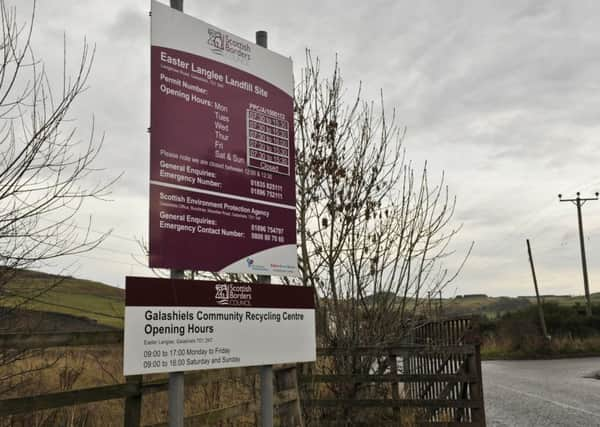Contamination assurances sought over £5m waste station


Any remedial measures arising from that study of what is currently the region’s main landfill site must also be agreed in advance of construction.
These are the recommendations of two of the council’s senior environmental health officials.
Advertisement
Hide AdAdvertisement
Hide AdIn a joint submission to SBC’s planning department, amenity and pollution officer David Brown and contaminated land officer Gareth Stewart say the proposed change of use at the site – from waste landfill to waste transfer – is “potentially contaminative”.
“It is the responsibility of the developer [SBC] to demonstrate the land is suitable for the proposed use,” states their report.
The pair do not object in principle to the council’s impending planning application for the WTS, but state that, as a condition of consent, a scheme containing details of how potential contamination can be tackled must be submitted and agreed in writing.
“The reason is to ensure that the potential risks to human health, the water environment, property and ecological systems arising from any identified land contamination have been adequately addressed,” states the report.
Advertisement
Hide AdAdvertisement
Hide AdThe council has set aside £5.15m in its capital spending programme for 2017/18 for the construction of the WTS from where 52,700 tonnes of residual household and commercial waste will be annually transported for treatment outwith the Borders.
The planning application for the transfer station is due to be considered by the council’s own planning and building standards committee in April and the contract for construction – for which tenders closed last week – is likely to be awarded to the successful bidder in the summer.
In its role as developer, the council has already received two reports from a firm of private consultants.
They have determined that the noise relating to the new development will have a “low impact on the nearest receptors [residents]” and that “there is no risk of significant odour pollution”.
Advertisement
Hide AdAdvertisement
Hide AdIf all other planning conditions are satisfied, the WTS should be up and running by May next year – three months before the landfill capacity at the dump, which has operated since the 1970s, is exhausted.
The annual cost of running the WTS is estimated at over £5m – roughly the same as the council currently spends on its waste treatment operations.
The switch from waste landfill to waste transfer has been driven by the Scottish Government’s impending ban on all biodegradable waste going to landfill by 2021.